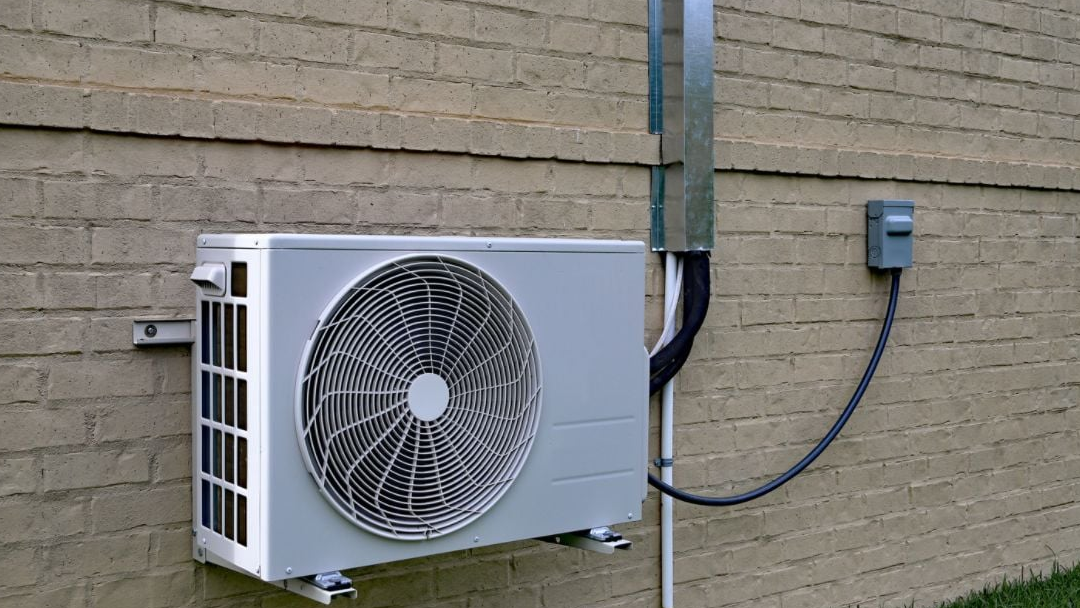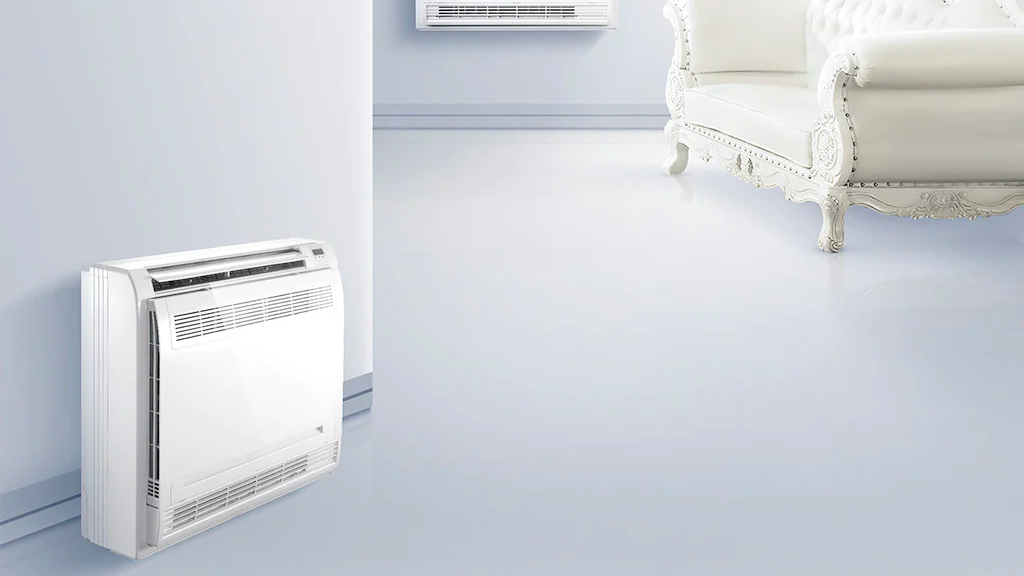Here at Elephant, we love heat pumps! And can you blame us? They help the planet, save money, and heat and cool your home WAY more efficiently than anything else on the market. All heat pumps are great, but different types of heat pumps bring different things to the table. Mini Split heat pumps are a particularly handy solution for certain homes – especially those without ducts. Wondering if mini splits are right for your home? That’s why we’re sharing our Ultimate Guide to Mini Split Heat Pumps.

The Basics of Mini Split Heat Pumps
What’s a heat pump?
If you’ve read Elephant’s Ultimate Guide to Air Source Heat Pumps you already know what makes heat pumps great – if not, here’s a primer. Unlike furnaces or boilers that burn fuel to generate heat, heat pumps take the heat already in the air and move it from one place to another. If it’s too cold in your house they pump heat from outside in, and if it’s too hot, they transfer the heat from inside outdoors. Because heat pumps take advantage of existing heat – rather than burning dirty fossil fuels to generate it – they’re able to heat and cool way more efficiently, saving you money in the long run. Heat pumps offer a highly efficient and eco-friendly solution for heating and cooling, but it’s important to note that they can come in different types, each with its own benefits and considerations in the heat pump vs. mini split debate.
Ok, but what’s a MINI SPLIT heat pump?
You might be wondering – is a heat pump the same as a mini split? Here we have a situation similar to the square-rectangle relationship, where a mini split is a specific type of heat pump, but not all heat pumps are mini splits. The thing that’s unique about mini splits is that they work for homes or rooms that are not serviced by ductwork. Where not to install a mini split? In a home with ductwork that is in good shape.
So…what’s a duct? Ducts are channels that are used to deliver heated or cooled air throughout a home. Ducted HVAC systems and heat pumps use ducts to move air throughout the house. This heats or cools the whole house at once. However, not all homes have ducts – older homes especially tend to lack them – and installing ducts can cost a pretty penny. For homeowners in this situation, mini splits can be a great solution since they don’t require ductwork.
So, how do mini split heat pumps work? Multiple units are installed throughout the house connected to a compressor outside. When a unit is turned on in one room it only heats or cools that room, not the whole house. To get more technical, mini split heat pumps use refrigerant to transfer heat energy between the outdoor compressor and the indoor handling units, with each indoor unit having its own thermostat and individual air handling allowing for zoned temperature control. So instead of one big pump, furnace, or boiler, there are multiple smaller units scattered throughout the house. They’re MINI and they’re SPLIT. Get it?

The Benefits
Here is a short primer on just a few of the many benefits mini split heat pumps have to offer:
Ductless!:
Installing ductwork involves cutting holes in the walls and ceilings, attaching vents, and fitting joints and piping. If you don’t already have it, it’s expensive and difficult to install. With mini splits, you don’t have to! What is the rule of thumb for ductless mini splits? Install them in a home without ductwork. Because they eliminate the need for ducts, mini split heat pumps are a great choice if you’re remodeling, building a new home, or living in one of the millions of homes in the U.S. without ductwork. They are also beneficial for situations where ductwork is in poor condition or for spaces like garages, which may not have ductwork but require a comfortable temperature.
Room-by-Room Temperature Control:
Here at Elephant, we’ve got a team with a variety of temperature preferences. Some like it hot and some like it cool. If your family is like us, mini splits are a great choice! They help to avoid thermostat wars because they allow you to easily adjust the temperature in one room at a time, instead of the whole house, allowing everyone to be as cool or warm as they want.
Big Savings:
Each unit heats the room it’s in, and only that room. That’s not just more convenient than heating the entire house, it’s more efficient, 20-60% more efficient than central air. That saves you big money on your electricity bill.
Better For The Planet:
What is the most efficient way to run a mini split? More energy efficient means more sustainable – running your system continuously is the best move. But the best thing about mini split heat pumps is that they’re heat pumps, and putting in a heat pump (no matter what kind) is one of the best things you can do to make your home more sustainable. Check out the Environmental Benefits Section of our Ultimate Guide to Air Source Heat Pumps to learn more.
Types of Mini Split Heat Pumps
There are a few types of mini split heat pumps on the market, each named after the location where they’re installed.
Ceiling Cassette
Installed in the ceiling, these units are designed to blend in seamlessly. Unless you’re looking for it, you may not even be able to tell it’s there. Prices vary, but ceiling cassettes are usually the most expensive.

Floor Mount
These units are typically smaller than ceiling units but they’re easier to spot since they’re mounted on the floor. Depending on where you place them, floor-mounted units can still blend in well. Prices vary but floor mounts are usually in between wall mounts and ceiling cassettes in cost.

Wall Mount
These units are mounted on the wall, so they’re the easiest to notice in a room but they’re the smallest of the three so they’re still relatively unobtrusive. They’re also usually the most affordable.

Installation Details for Mini Split Heat Pumps
Thinking of getting a mini split heat pump? Here’s what you should expect.
Cost
The average total cost (including installation) of a single mini split unit ranges between $4,000-$8,000, after rebates. The total project size will depend on the brand, the number of units, and the specific needs of your home.
Brands
There are a lot of different brands and models out there. Our team at Elephant can help you figure out which is the right one for you. We tend to recommend Mitsubishi mini split systems because they are high efficiency and thrive in cold climates like Colorado and Massachusetts.
The table below can give you a sense of directional equipment costs, by brand. Note that these prices don’t include the cost of installation.
| Brand | Average Cost Range* | Efficiency |
| Daikin | $1,000 – $11,200 | Low to average |
| Fujitsu | $1,180 – $9,300 | Low to average |
| LG | $900 – $10,100 | Average to high |
| Mitsubishi | $1,500 – $12,500 | High |
(SOURCE: Home Advisor)
Installation
What to expect
Installing mini splits is much simpler than putting in ducts, but it of course still takes some work. Specifically, installing mini splits requires an HVAC professional and, depending on your home, often an electrician and a permit, too. If you’re in one of the markets we service here at Elephant – the Denver and Boston metropolitan – we’ll be able to give you an estimate as well as find the right team for your installation from within our network of vetted contractor partners.
Once you’re ready, get excited because most mini split installations are quick, easy, and take less than a day! Learn more about working with us here.
Wrapping Up
So there you have it, the complete guide to mini split heat pumps. They’re discrete, eco- and budget-friendly, and they let you control the temperature of each room. If these sound good to you, or you don’t have ductwork where you live, mini splits are a great fit. Either way, any type of heat pump is always a great choice.
Want to make a plan to get your home off of fossil fuels? Check out our free tool, Your Electrification Roadmap®. It allows you to share your priorities and preferences and then uses that information to build a personalized home electrification roadmap that’s clear, intuitive, and easy to follow.